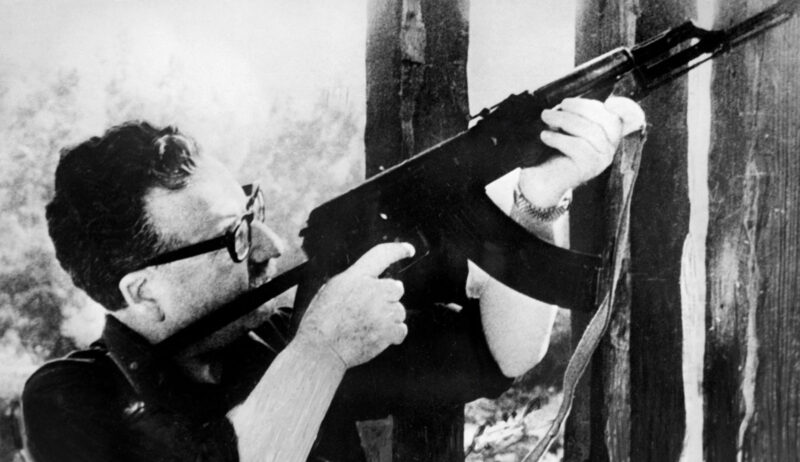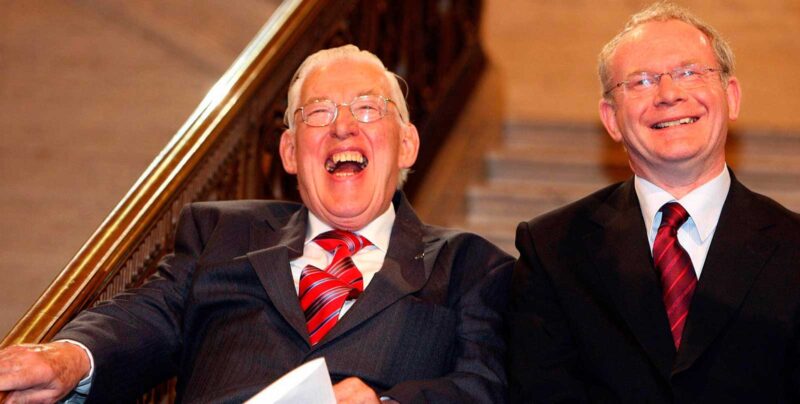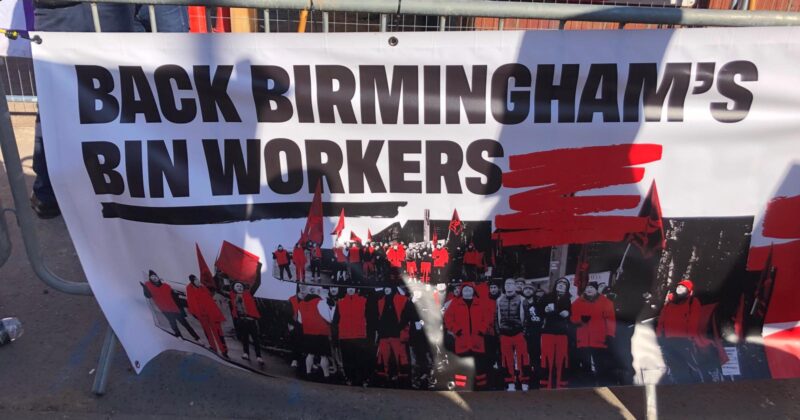125th Anniversary of the Matchworkers' Strike
On the 125th anniversary of the matchwomen’s strike in the East End of London, Joy Macready examines the strike’s origins and how it sparked the “New Unionism” movement
“Born in slums, driven to work while still children, undersized because under-fed, oppressed because helpless, flung aside as soon as worked out, who cares if they die or go on to the streets…”
These words could be used to describe the miserable living and labour conditions for workers, mainly young women, in sweatshop factories operating in special economic zones across the world, from Mexico and Jordan to Bangladesh and China.
But this description was written in 1888 by Fabian activist Annie Besant in her weekly paper, The Link: A Journal for the Servants of Man, exposing the terrible working conditions of the matchworkers in the sweatshops of London’s East End.
In an article published on 23 June 1888, entitled White slavery in London, Besant continued: “The hour for commencing work is 6.30 in summer and 8 in winter; work concludes at 6 p.m. Half-an-hour is allowed for breakfast and an hour for dinner. This long day of work is performed by young girls, who have to stand the whole of the time. A typical case is that of a girl of 16, a piece-worker; she earns 4s. [20p] a week and lives with a sister…”
Not only were these workers paid a pittance, but the owners of the factory, Bryant & May, also docked their pay for the slightest of trifles, such as talking, going to the toilet, dropping matches and being late. All the while the company’s shareholders were receiving a dividend of up to 25 per cent.
Exposure to white phosphorus was the worst aspect of the job. Poor ventilation made the phosphorus fumes lethal, and ‘phossy jaw’, a form of bone cancer, ran rife. The first signs of exposure were toothache and swelling of the face, then the gums and cheeks developed putrid abscesses. The matchwomen went to great lengths to hide their symptoms because they would be immediately dismissed as a result.
Spark that lit the strike
At the time of the strike, owners Francis May and William Bryant (both Quakers) were at a peak of status and influence. Besant’s article forced them to defend their reputation by threatening to sue her for libel. In order to refute the allegations, factory foremen tried to force the matchwomen to sign a paper to prove that their conditions were fair. When a group of women refused to sign, three workers – considered the ringleaders – were sacked. The response was immediate and the vast majority of workers walked out. On 2 July 1888 these unskilled, unorganised, poverty-stricken women, went on strike.
They didn’t leave the factory grounds, but waited at the gates for workers from the other sites to come out, told them what had happened and persuaded them not to go back after the lunch break. More than 1,500 matchworkers went on all-out indefinite strike. Their lively and well-attended picket line was in action by 8 a.m. on the second day of the strike. In addition, they elected a strike committee.
A mass meeting was held at the factory gates and 1,100 took to the streets in Bow. By 6 July the whole factory was lying idle and management was threatening to draft in workers from their Glasgow factory. Lewis Lyons, a militant activist in the tailoring trade, came down to the factory, attempted to address the crowd and was arrested for obstruction. The matchwomen surrounded the arresting officers and marched in solidarity to the police station, where a mass meeting was held.
On 7 July 100 workers went to Besant’s Fleet Street office to ask for support. Two days later there were two mass meetings, one at Mile End Waste and the other in Regent’s Park, the latter passing Besant’s resolution to boycott Bryant & May. On 11 July more than 50 matchwomen marched on parliament.
Donations flooded in for the strike fund. In her new book, Striking a light, Louise Raw dispels the popular myth that Besant was the leading force in the match strike, but she does acknowledge the role played by Besant, and fellow Fabians and socialists, such as George Bernard Shaw, Sidney Webb, Tom Mann and Herbert Burrows, in appealing for donations, effectively providing the material basis for the strike to continue.
Fourteen days into the strike, management caved in: all fines and most deductions would be abolished; petty deductions were abolished; 3d. was restored to the packers’ pay; there would be no victimisation; and the firm would recognise the union.
On 27 July 1888, the inaugural meeting of the Union of Women Match Makers was held. Besant was elected the first secretary. By the end of the year, it became the Matchmakers Union, open to men and women, and the following year sent its first delegate to the Trade Union Congress. Although the Matchmakers’ Union only existed until 1903, the action taken in 1888 had both immediate and long-term reverberations.
It is easy to see how those women provided inspiration for a new type of trade unionism. They were young, loud and unwavering in their solidarity and support for each other. They forced Bryant & May to climb down – they won!
New Unionism
Up until the late 1880s, trade unions were mainly craft-based and only organised skilled labourers, or labour “aristocrats”. With the industrialisation of Britain bringing thousands of semi-skilled and unskilled workers into mass production, Mann argued that the trade union movement needed to become far more open and inclusive. “New unionism” reached out to the many unskilled workers who lacked union representation.
The matchwomen were an example to all the other unskilled labourers that, if they stood united in withdrawing their labour, they too could improve their conditions and stand up to abuse. As news of their victory spread, the dockers – thought unorganisable because of the casual nature of their work – contacted the Union of Women Matchmakers to ask for advice on setting up their own organisation. And the next year saw the Great Dock Strike, as well as boilermakers, cotton workers, ironworkers, miners and a number of other industrial disputes.
The Great Dock Strike started on 14 August 1889; dockers unloading cargo on South-West India docks walked off the job when a supervisor refused to pay the extra owed to them. On 21 August 100,000 supporters demonstrated in Hyde Park, with seven bands playing the ‘Marseillaise’, demonstrating their revolutionary feelings.
The next day saw 37,000 workers on strike, brought out by 15,000 flying pickets; by the 25 August there was more than 130,000 strikers, including stevedores, ship-painters, carpenters and biscuit and jam factory workers. The dockers organised almost daily marches through the streets, collecting money to sustain their fight. Australian dockers sent a £30,000 donation.
The dockers returned to work on 16 September having won all their demands. Other workers took up the drive to build unions and win better conditions. In November Eleanor Marx was involved in the fight of women workers in East London’s rubber industry, with thousands striking and demonstrating. There were major strikes in Cardiff, Bristol, Wolverhampton, Sheffield, Manchester, Halifax, Hull and Tyneside. In Leeds thousands of gas workers joined the union and won an eight-hour day.
The strike wave of 1888-89 led to a massive May Day demonstration in London in 1890. In 1892, Friedrich Engels wrote: “That immense haunt of human misery [the East End] is no longer the stagnant pool it was six years ago. It has shaken off its torpid despair, it has returned to life, and has become the home of what is called the ‘New Unionism’, that is to say, of the organisation of the great mass of ‘unskilled’ workers.”
Engels championed the break from ‘old unionism’, which accepted the wage system and effectively the rule of the bourgeoisie: “The New Unions were founded at a time when the faith of the eternity of the wages system was severely shaken; their founders and promoters were socialists either consciously or by feeling; the masses, whose adhesion gave them strength, were rough, neglected, looked down upon by the working class aristocracy; but they had this immense advantage, that their minds were virgin soil, entirely free from the inherited ‘respectable’ bourgeois prejudices which hampered the brains of the better situated ‘old’ Unionists.”
Lesson for today
A similar process of industrialisation that happened in Britain in the 1800s is happening across the developing world, pulling millions from the countryside into mass production. These new workers, the vast majority young women, are rising in revolt against their terrible conditions. New trade union organisations are burgeoning in sweatshop zones to fight against workers being used up and disposed of when their bodies are broken from overwork and underpay, while multinational companies are reaping super-profits.
Similar to the matchwomen, the level of solidarity is inspiring – when more than 1,000 Bangladeshi workers were killed as their factory collapsed, tens of thousands of garment workers came out on strike across the country. Workers around the world protested against this tragedy and raised money to help the workers’ families.
This new wave of trade unionism is also of great importance in Britain and the US where there has been a massive regression from unionised, well-paid jobs to poorly paid, precarious working, again often involving women and young workers. It is the urgent duty of socialists and rank and file militants in the unions (like the Unite community branches) to help these workers to launch a wave of action (like the recent strike wave at US fast food chains) similar to the “new unionism” wave in 1888-91.







